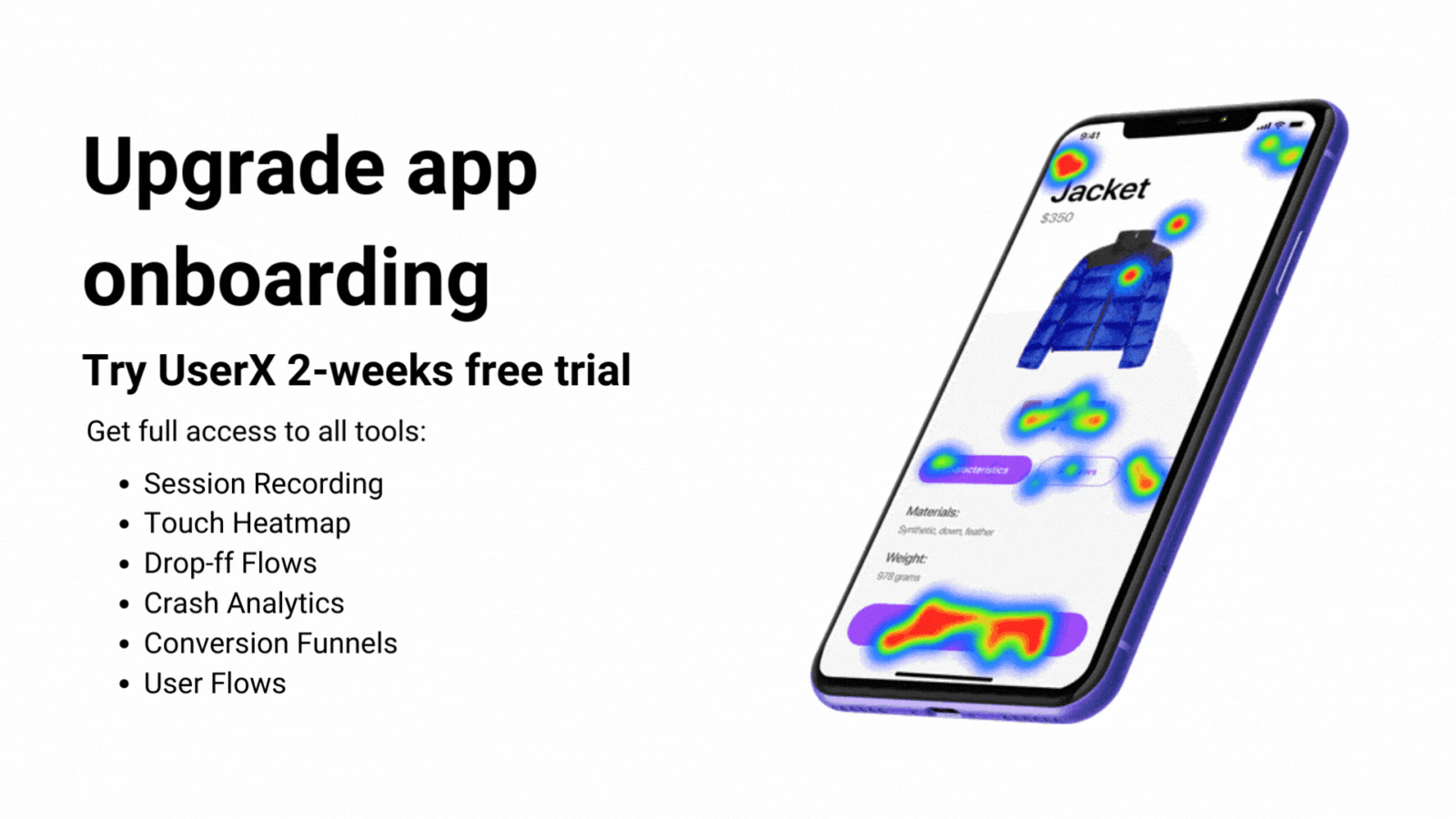Table of Contents
Introduction
In the rapidly evolving world of mobile applications, the concept of "app onboarding" has become a cornerstone for success. This process, pivotal in the user's journey, is the first interaction point between the user and the app. It sets the tone for the entire user experience, making it crucial for developers and designers to get it right. App onboarding is not just about welcoming users; it's about guiding them through the app's features, functionality, and overall value proposition in an engaging and intuitive way. As we delve deeper into the realm of mobile app onboarding, it's important to understand its significance in user retention and satisfaction. A well-designed onboarding process can drastically improve the user's understanding of the app, leading to increased usage and loyalty. Mobile app onboarding serves as an educational and persuasive tool, helping users navigate the app effortlessly while highlighting its key benefits. In essence, it's the first step in building a long-lasting relationship between the user and the app. By focusing on effective app onboarding strategies, businesses can ensure that their mobile applications are not just downloaded, but also consistently used and valued by their target audience. This introduction will explore the intricacies of app onboarding, emphasizing its vital role in the success of mobile applications in today's digital landscape.
What is App Onboarding?
App onboarding is the process through which new users are introduced and acclimated to a mobile application. It's a critical phase where users first encounter the app's interface, features, and overall functionality. The goal of app onboarding is to provide a smooth, informative introduction that enhances user understanding and engagement from the very first interaction.
This process can take various forms, such as walkthroughs, tutorials, or a series of introductory screens. Each method aims to simplify the user's initial experience, reducing any potential confusion or frustration. By effectively implementing onboarding in an app, developers can ensure users not only grasp the core functionalities but also perceive the value and utility of the app. A well-executed onboarding process directly contributes to a positive user experience, encouraging continued use and fostering a deeper connection with the application. In essence, app onboarding is a bridge that connects users with the app, facilitating a seamless transition from curiosity to regular usage.

The Importance of Mobile App Onboarding
The essence of mobile app onboarding lies in its ability to significantly influence user engagement and retention. In the competitive landscape of mobile applications, first impressions are paramount. Mobile app onboarding acts as a guiding hand, leading users through the initial complexities and unlocking the potential for a deep, lasting user-app relationship.
A thoughtful mobile app onboarding process serves multiple critical roles. Firstly, it reduces the initial learning curve, enabling users to quickly understand and appreciate the app's functionalities. This immediate comprehension is essential in preventing early drop-offs, where users abandon the app due to confusion or frustration. Secondly, effective onboarding tailors the experience to the user's needs, showcasing the most relevant features and benefits. This personalized approach not only enhances user satisfaction but also fosters a sense of connection with the app.
Moreover, mobile app onboarding provides invaluable insights through app analytics. By analyzing how users interact with the onboarding process, developers gain a clearer understanding of user behavior and preferences. These analytics can be leveraged to optimize the onboarding experience, ensuring it aligns with user expectations and enhances overall engagement.
Another critical aspect of mobile app onboarding is its impact on long-term retention. Users who find value and ease in their initial interactions are more likely to become regular, loyal users. Onboarding sets the stage for this by effectively demonstrating how the app fits into the user’s daily life, thus encouraging habitual use.
In summary, mobile app onboarding is more than just an introductory step; it's a strategic component crucial for the success of any mobile application. By ensuring a user-friendly, informative, and engaging onboarding experience, app developers can significantly boost both immediate engagement and long-term user retention. It is this initial phase that can determine an app’s standing in the crowded and competitive mobile app market.
Mobile App Analytics in Onboarding
In the realm of mobile app development, analytics play a pivotal role in optimizing the onboarding process. Mobile app analytics offer valuable insights into how users interact with the app during onboarding, enabling developers to refine and enhance the app onboarding flow for better user experiences.
The primary role of app analytics in onboarding is to track user behavior and engagement. By analyzing metrics such as user drop-off points, the time spent on each onboarding screen, and the interaction rates with different elements, developers can identify areas where users might be struggling or losing interest. This data is crucial in understanding the effectiveness of the onboarding flow and pinpointing opportunities for improvement.
For instance, if analytics reveal a high drop-off rate at a particular onboarding stage, it may indicate that the information presented is either too complex or not engaging enough. Developers can then adjust this part of the onboarding flow, perhaps simplifying the content, adding interactive elements, or splitting the information into smaller, more digestible parts.
Analytics also aid in personalizing the onboarding experience. By understanding user preferences and behaviors, developers can tailor the onboarding process to suit different user segments. This personalization can lead to a more relevant and engaging onboarding experience, which in turn can improve user retention.
Additionally, app analytics can help in A/B testing different onboarding strategies. By comparing user responses to different onboarding flows, developers can scientifically determine which approach is more effective in retaining users and encouraging app usage.
In summary, mobile app analytics are instrumental in measuring and improving the onboarding process. They provide actionable insights that help in crafting an onboarding experience that is not only informative but also engaging and personalized, ultimately leading to better user retention and app success.

Designing an Effective Onboarding Flow
Creating a seamless and intuitive onboarding flow is essential for ensuring a positive initial user experience. An effective onboarding flow is the backbone of successful user engagement, guiding them through the app's functionalities in a logical, user-friendly manner.
The first step in designing this flow involves understanding the user's perspective. Onboarding UX should be focused on simplicity and efficiency. Users should be introduced to the app's core features in a way that feels natural and unobtrusive. Avoid overwhelming them with too much information; instead, opt for a gradual approach that unfolds as they become more comfortable with the app.
A key aspect of onboarding in an app is customization. Tailoring the onboarding experience to individual user needs can significantly enhance engagement. This could involve presenting different onboarding paths based on user choices or previous interactions. By personalizing the experience, users feel more connected and valued, which can lead to better retention rates.
Interactive elements can also enrich the onboarding flow. Integrating activities such as quick tutorials, interactive walkthroughs, or even simple quizzes can make the learning process more engaging. This interactivity not only aids in information retention but also makes the onboarding process more enjoyable.
In conclusion, an effective onboarding flow should be user-centric, interactive, and personalized. It should gently guide users through the app, revealing features and functionalities at a pace that suits their learning curve. By prioritizing a smooth and engaging onboarding experience, developers can lay the foundation for sustained user engagement and satisfaction.
Best Practices for Mobile App Onboarding
- Keep It Simple: The golden rule of mobile app onboarding is to keep it simple and straightforward. Users should be able to grasp the basic functionalities of the app without feeling overwhelmed. Limit the amount of information and focus on core features to prevent cognitive overload.
- Use Progressive Disclosure: Instead of bombarding users with all the information at once, employ a progressive disclosure approach. Unveil features gradually as users get more accustomed to the app. This method keeps users curious and encourages them to explore the app further.
- Personalize the Experience: Personalization can significantly enhance the onboarding process. Tailor the onboarding experience based on user data like location, usage patterns, or even user roles. A personalized onboarding mobile app experience makes users feel valued and understood.
- Incorporate Interactive Elements: Interactive elements such as swipe gestures, taps, or simple games can make onboarding more engaging. These elements help in illustrating how to navigate the app and use its features in a fun and memorable way.
- Utilize Visual Aids: Visual aids like illustrations, animations, and videos can convey information more effectively than text alone. They can simplify complex concepts and make the onboarding process visually appealing.
- Offer Assistance: Provide users with the option to access help or further information. This could be through in-app FAQs, chat support, or tutorial videos. Offering support ensures users don't feel lost or frustrated.
- Gather Feedback and Iterate: Continuously gather user feedback on the onboarding experience and use it to make improvements. Monitoring user behavior and feedback through mobile app onboarding analytics can reveal insights into what works and what doesn’t, allowing for iterative improvements.
In conclusion, mobile app onboarding should be a blend of simplicity, personalization, interactivity, and continuous improvement. By adhering to these best practices, developers can create an onboarding experience that not only educates but also delights, leading to higher engagement and retention rates.
Enhancing User Experience with Onboarding UX
The onboarding process is a user's first encounter with an app, and the UX (User Experience) design of this phase is crucial in determining the app's overall appeal and usability. Good onboarding UX is all about making this initial interaction as smooth and pleasant as possible, which is fundamental in setting the tone for the entire user journey within the app.
A well-designed onboarding UX caters to the needs and expectations of users. It should intuitively guide them through the app's basic functionalities, helping them understand how to navigate and use the app effectively. This is especially important for more complex or feature-rich apps, where users might feel overwhelmed without proper guidance. The onboarding mobile app experience can make or break a user's perception of the app.
Moreover, the onboarding UX is not just about functionality. It's also an opportunity to establish an emotional connection with the user. By incorporating engaging content, appealing visuals, and a conversational tone, the onboarding process can create a positive emotional response, enhancing user satisfaction from the outset.
Furthermore, a thoughtful onboarding UX design considers the diverse needs of its users. This includes accommodating different levels of tech-savviness and providing accessibility features for users with disabilities. By being inclusive, the onboarding experience can resonate with a broader audience, improving overall user satisfaction.
In essence, the UX design of the onboarding process is a critical factor in user satisfaction. It not only assists in the practical aspects of learning how to use the app but also plays a significant role in making users feel welcomed and valued, encouraging them to continue using the app long after the onboarding phase is over.
Necessity and Strategies of App Onboarding
App onboarding is an indispensable component of the modern app development process. Its necessity stems from the crucial role it plays in user retention, engagement, and overall satisfaction. A well-structured app onboarding flow can significantly influence whether a user decides to continue using the app or abandon it. This initial interaction sets the tone for the entire user experience, making it vital for developers to invest in effective onboarding strategies.
One effective strategy is the implementation of a progressive app onboarding flow. This approach gradually introduces users to the app’s functionalities, reducing the risk of overwhelming them with too much information at once. It's about revealing the right features at the right time, guiding users through a journey that gradually increases in complexity as their familiarity with the app grows.
Another strategy is contextual onboarding, which involves providing guidance within the app as users encounter new features. This method, often integrated seamlessly into the app's regular usage, ensures that users receive help exactly when they need it, making the learning process more natural and less intimidating.
Personalization in app onboarding is also crucial. By tailoring the onboarding experience to the user's preferences and behavior, apps can create a more engaging and relevant introduction. This might involve customizing content, language, or even the onboarding pace based on user data.
Lastly, the incorporation of interactive elements, such as swipes, taps, and other gestures, can make the onboarding process more engaging. Interactive onboarding not only helps in better retention of information but also adds an element of fun, encouraging users to explore the app further.
In conclusion, app onboarding is not just a formality but a necessity in today’s app ecosystem. It's an opportunity to engage users right from the start, setting the foundation for a lasting relationship. Employing strategies like progressive revelation, contextual guidance, personalization, and interactivity can significantly enhance the effectiveness of the onboarding process.
Conclusion
In conclusion, app onboarding is a critical element in the success of mobile applications. A well-designed onboarding process not only familiarizes users with an app's features and functionalities but also significantly enhances user engagement and retention. Mobile app onboarding acts as the bridge between downloading an app and becoming an active, satisfied user. It's a unique opportunity to make a strong first impression, establish a user’s understanding of the app, and set the stage for ongoing interaction.
Throughout this article, we've explored various strategies and best practices, emphasizing the importance of simplicity, personalization, and interactive elements in creating an effective onboarding experience. The role of analytics in refining this process has also been highlighted, showcasing how data-driven insights can lead to more engaging and user-friendly onboarding flows.
In essence, investing in mobile app onboarding is not just about enhancing the initial user experience; it's about laying the groundwork for a long-term relationship between the user and the app. By prioritizing a thoughtful and well-executed onboarding strategy, app developers can ensure higher user engagement, satisfaction, and ultimately, the success of their app in the competitive digital market.
Frequently Asked Questions
- What is App Onboarding and Why is it Important?
- App onboarding is the process of introducing new users to an app's features and functionalities. It's crucial because it helps users understand how to use the app, thereby enhancing their experience and increasing the likelihood of continued use.
- How Can Mobile App Onboarding Improve User Retention?
- Mobile app onboarding improves user retention by providing a seamless introduction to the app, reducing initial learning curve, and demonstrating the app's value, which encourages users to continue using it.
- What are the Best Practices for Designing an Onboarding Flow in Apps?
- The best practices for designing an onboarding flow include keeping it simple, using progressive disclosure, personalizing the experience, incorporating interactive elements, and constantly iterating based on user feedback.
- How Does Onboarding UX Impact User Satisfaction?
- Onboarding UX significantly impacts user satisfaction by ensuring that the introduction to the app is user-friendly, intuitive, and engaging, which helps in building a positive initial impression and encourages continued usage.
- Can App Analytics Be Used to Optimize the Onboarding Process?
- Yes, app analytics can be used to optimize the onboarding process by providing insights into user behavior, identifying drop-off points, and helping to tailor the onboarding experience to meet user needs more effectively.
- Why is Personalization Important in Mobile App Onboarding?
- Personalization in mobile app onboarding is important because it tailors the experience to individual user preferences and behaviors, making the onboarding process more relevant, engaging, and effective in retaining users.



